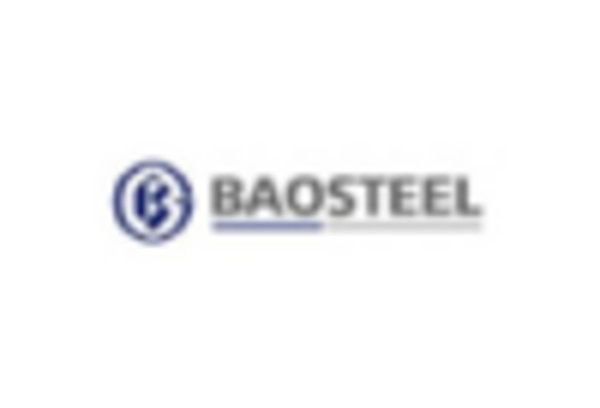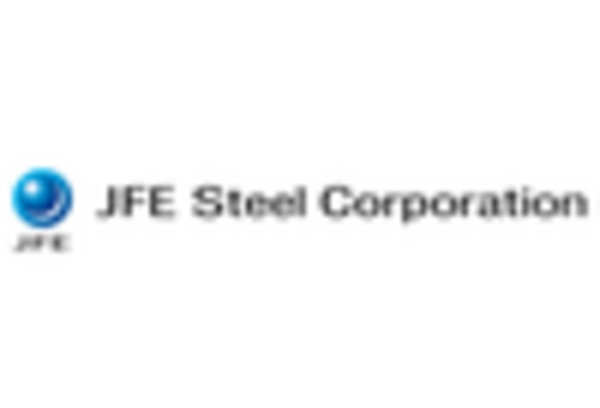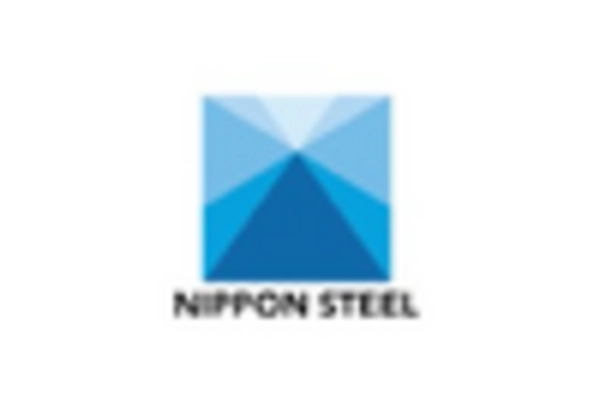Regulatory Frameworks
The evolving regulatory frameworks in Europe are shaping the steel market significantly. Stricter environmental regulations are compelling steel manufacturers to adopt cleaner production methods. For instance, the European Union's Green Deal aims to reduce greenhouse gas emissions by at least 55% by 2030. This regulatory push is likely to increase operational costs for steel producers, as they may need to invest in new technologies and processes. Furthermore, compliance with these regulations could lead to a consolidation of smaller players in the market, as only those with sufficient capital can adapt. The impact of these regulations is expected to be profound, potentially altering competitive dynamics within the steel market and influencing pricing strategies across Europe.
Raw Material Availability
The availability and pricing of raw materials are critical drivers in the steel market. Europe relies heavily on imports for key raw materials such as iron ore and scrap steel. Fluctuations in global supply chains can lead to significant price volatility. For example, in 2025, iron ore prices have seen an increase of approximately 20% due to supply disruptions in major exporting countries. This situation compels European steel manufacturers to explore alternative sourcing strategies or invest in recycling technologies to mitigate risks. The ongoing geopolitical tensions may further exacerbate these challenges, making raw material availability a pivotal factor influencing production costs and overall market stability in the steel market.
Construction Sector Recovery
The construction sector's recovery in Europe is poised to be a vital driver for the steel market. Following a period of stagnation, infrastructure projects are gaining momentum, fueled by government investments and initiatives aimed at revitalizing economies. In 2025, construction activities are expected to increase by approximately 15%, leading to heightened demand for structural steel. This resurgence is likely to benefit steel manufacturers, as they will need to ramp up production to meet the growing needs of the construction industry. Additionally, the focus on sustainable building practices may encourage the use of recycled steel, further influencing production methods within the steel market.
Demand from Automotive Sector
The automotive sector remains a substantial driver for the steel market in Europe. As the demand for electric vehicles (EVs) rises, the need for high-strength, lightweight steel is becoming increasingly pronounced. In 2025, the automotive industry is projected to account for approximately 30% of total steel consumption in Europe. This shift towards EVs necessitates innovative steel solutions that enhance vehicle performance while reducing weight. Consequently, steel manufacturers are likely to invest in research and development to create advanced steel grades tailored for automotive applications. The interplay between automotive demand and steel production capabilities will significantly shape the landscape of the steel market in the coming years.
Technological Innovations in Production
Technological innovations in production processes are transforming the steel market in Europe. Advancements such as automation, artificial intelligence, and data analytics are enhancing operational efficiencies and reducing costs. In 2025, it is estimated that companies adopting these technologies could see productivity gains of up to 25%. Moreover, the integration of smart manufacturing techniques allows for real-time monitoring and optimization of production lines, which can lead to improved product quality. As competition intensifies, steel manufacturers are likely to invest heavily in these innovations to maintain their market position. The ongoing evolution of production technologies will play a crucial role in shaping the future of the steel market.


















Leave a Comment